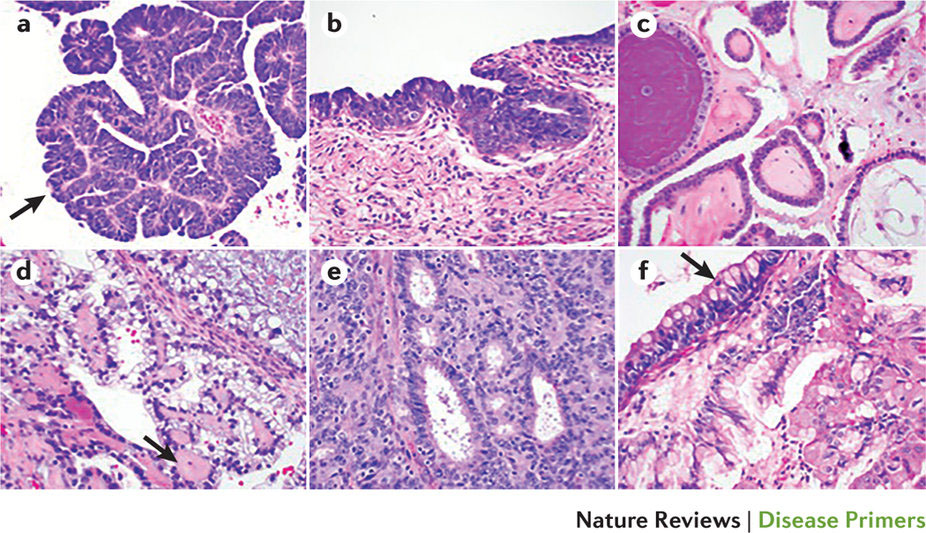卵巣がん
Ovarian cancer
2016年8月25日 Nature Reviews Disease Primers Article number: 16061 (2016) doi: 10.1038/nrdp.2016.61

卵巣がんは単一疾患ではなく、少なくとも5つの組織型に細分類され、それぞれの型で同定可能なリスク因子、起始細胞、分子組成、臨床的特徴および治療法が異なっている。卵巣がんは世界的な問題であり、進行した状態で診断されることがほとんどで、有効なスクリーニング戦略がない。新たに診断された卵巣がんの標準治療には腫瘍縮小手術やプラチナ製剤併用化学療法が行われる。再発例には、化学療法や抗血管新生薬をはじめ、ポリ(ADPリボース)ポリメラーゼ阻害薬が使用されており、現在、免疫学的治療法も検討されている。高悪性度漿液性腺がん(HGSC)は最もよく診断される卵巣がんの組織型で、一般的に診断時にはプラチナ製剤併用化学療法によく反応する。しかし、他の組織型同様、HGSCも再発することが多く、化学療法への耐性が増加するようになる。そのため、プラチナ製剤耐性の獲得機構の理解とこれを克服する手段の確立は、卵巣がんの研究の中でも活発に行われている分野である。漿液性卵管上皮内がんと呼ばれるHGSCの前駆病変をはじめ、卵巣がんの高リスクに関連する遺伝子( BRCA1、BRCA2など)の同定に大きな進展があった。これにより卵巣がん発症の高リスク例が同定され、予防戦略が開発されることが期待されている。
PrimeView
このPrimeViewでは、相同組換えやDNAミスマッチ修復に関与する遺伝子を含む、卵巣がんの発症に関連する遺伝子変化について取りまとめる。
本Primerの図解サマリー

